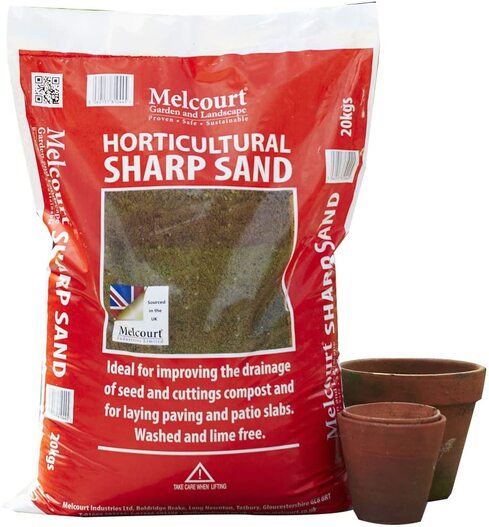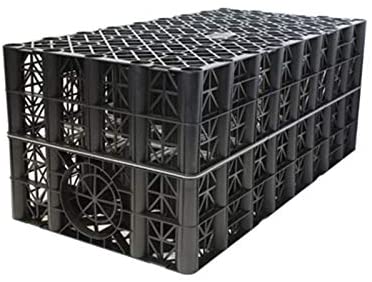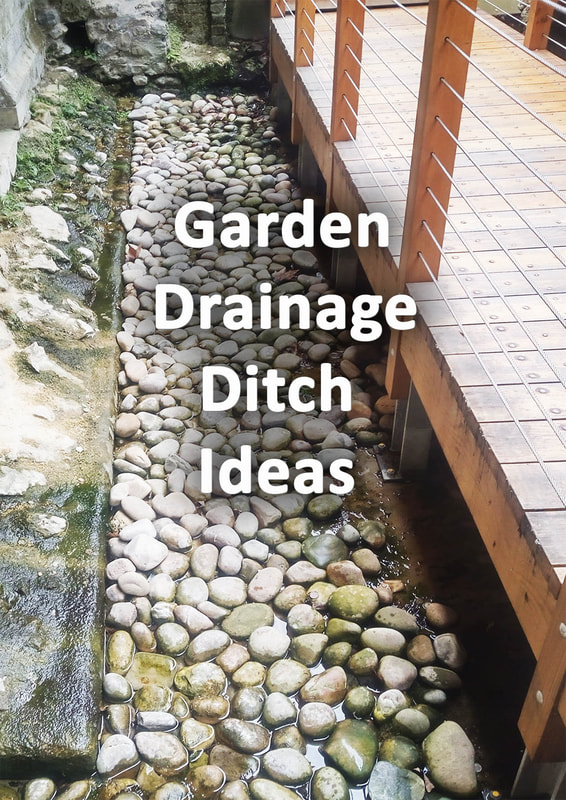|
This article contains affiliate links
Garden drainage and water logging problems have become more prevalent in recent years. With more unpredictable weather and continuous development ground has become overwhelmed and saturated.
A growing desire for extra parking and maintenance free gardens has led to less bare soil. This has reduced nature’s natural ability to absorb storm water runoff. The result has been ever increasing water logging leading to drainage problems. Not only can saturated ground cause problems for gardens it can also lead to damp within the home. Therefore it is always good to address garden drainage problems before they become entrenched. In this article we list and explain the items you will need to drain your garden for good. We have separated out what you will need for lawn drainage, soil drainage and garden drainage systems. What do you need to drain your garden lawn?
Waterlogged and boggy lawns can really restrict your usable, garden, space. Poor lawn drainage can also lead to muddy patches and a rutted surface. Below we list what you will need to help remedy a waterlogged lawn. You may also wish to read our article on lawn drainage. It covers diagnosing your lawn drainage problems and how to solve them effectively. Lawn Core aerator
Lawn aerators are garden machines which aerate lawns with rotating spikes. The spikes penetrate the lawns surface, alleviating compaction and improving drainage. Many aerators come with different spike attachments for different purposes. Some of these include de-thatching, coring and pricking. The most effective aerator of lawn drainage is a core aerator. These core out small cylinders from of the lawns surface. Free draining, course sand, can then be swept into the holes to improve the lawns drainage. Hand lawn aerator
Hand operated aerators are a much more basic affair but will achieve the same result. These are much better for smaller garden lawns and are much more affordable. However you may find continuously driving them into the lawns surface quite physical. Hand operated aerators however will allow you closer attention to each section of lawn as you work. Foot spikes
If you want to aerate your lawn with the minimum of effort foot spikes can be very effective. These rely more upon spiking than coring which is a little less effective. The plus side is you do not necessarily need to sweep sand into the lawn afterwards. Lawn dressing
Lawn dressing is a combination of soil conditioners and free draining coarse sands. These can be applied to the surface of the lawn over time to improve drainage. Lawn dressing helps to feed the grass and strengthen its roots. With seasonal applications the free draining sands help to improve the lawns drainage over time. Thicker applications can be used to fill in bowels and divots within the lawns surface. What do you need to drain your Soil?
Poor soil drainage can lead to stagnant flower borders which can create multiple, other, problems. Tree roots can begin to rot causing them to become unstable and even die. Popular garden shrubs and plants will also perish in saturated ground. Continuous saturation will also lead to compaction and bad smells. Therefore I have listed what you will need to drain your garden soil below. For more extensive knowledge and information on how to drain your garden read our article here. Rotavator
Rotavators are powerful machines which turn over the soil with rotating blades. As the blades rotate, compacted soil is churned and fluffed into a fine texture. This is perfect for preparing the soil for new planting or laying turf. The larger gasoline rotavators are the best machines for poorly drained conditions. In such cases rotavating should be carried out in spring. By adding sharp sand and organic matter as you work will improve your soils drainage significantly. Spades
Spades are a more common and basic tool but essential to improving soil drainage. Spades are great for turning over compacted soil and breaking up stubborn clods. One of the best ways to utilise spades to improve a soils drainage is with double digging. This involves digging trenches two spade depths deep and adding organic matter. This helps to break up the grounds hard pan and dramatically improve water permeability. Course sand
Course sand is very effective at improving soil drainage. This is especially the case if you have clay soil. Course sand breaks up clay soil by reducing clay particles ability to stick together. The result is clay which crumbles more easily and holds less water. Over time sand can dramatically improve a gardens soil drainage. This is best added during rotavation! Soil improver
Soil improvers feed the soil with essential nutrients and organic matter. When mixed into borders it helps to strengthen plants and boost soil life. This helps to reduce compaction and enhances the soils ability to absorb water. The organic matter can help to loosen soil particles making them drain easily. Soil improver is not exactly the same as compost as it has added rock particles and minerals. These along with natural additives like gypsum help to break up soil particles. However compost is a typical component of all soil improvers. Agricultural gypsum
Agricultural Gypsum is a natural fertiliser otherwise known as calcium sulphate. When applied to heavy soils such as clay it chemically reacts with moisture within soil particles. This makes them break down and crumble loosening the soils structure and improving drainage. Bark chippings
Bark chippings applied to the soils surface can really help to suppress weeds and encourage soil life. This leads to improved soil structure over time and better drainage. If your beds regularly become waterlogged bark chippings can prevent them becoming compacted. They will also make moisture evaporation from the soil surface easier. In soil with extremely poor drainage bark chippings can be dug into the soil. This will help to break up compaction and improve water penetration. What do you need for garden drainage systems?
It is very often the case that persistent and prolonged drainage problems may require more than spot treatment. This typically means a greater assessment of your sites contributing hydraulic fundamentals. This includes elements such as land form, soil type and existing drainage strategies. More often than not you will need to install a garden drainage system of some kind. This could include, re-levelling or installing drainage, gulleys, channels and soakaways to solve the problem. Below I have listed and described what you will need for garden drainage systems. For further reading on diagnosing your garden drainage issue read my in-depth article here. Drainage grills
Drainage grills are drainage gulley's which are optimal for collecting surface water from hard surfaces. These are exceptionally useful for collecting surface run off before it runs onto already boggy soil. These drainage chambers are best plumbed into pipes which feed a submerged drainage soakaway. Garden drains
Garden drains come in a range of products and installations. However typically they consist of a covered, water inlet, which helps to drain surface water. This could be installed to the low end of a hard surface or in a part of the garden which regularly floods. PVC drainage pipes
PVC drainage pipes are robust enough to withstand ground pressure. This makes them perfect for garden drainage systems of all types. Their typical installation involves transporting water from a drainage point to a destination drain. They come in a range of diameters but 50mm and 100mm are commonly used. Perforated pipes
Perforated pipes are long, flexible pipes, with small slits around their circumference. These are traditionally used to drain boggy areas of saturated ground. Hydraulic pressure forces water to trickle into the pipes and directs it away. Perforated pipes are very often utilised within French drains and drainage channels. Here they are encased within free draining aggregates to draw water from the soil. Free draining gravels
Free draining gravels are evenly graded aggregates which allow water to freely pass through them. Their collective density combined with excellent permeability make them perfect for filling drainage channels and soakaways. 10mm gravel is best for drainage as its large enough for rapid water penetration but small enough to avoid silting. It is important that gravel utilised in landscape drainage is non-calcareous. This is to avoid acids within rain water to degrade aggregates and lead to future blockages. Free draining aggregates should always barrier soil with filtration membrane to prevent silting. Filtration membrane
Filtration membrane has tiny holes to allow water to pass through but not soil particles. This reduces the risk of silting and ground settlement around drainage systems. There are a number of filtration membranes on the market including Geo-textile and Terram. Soakaway drainage crates
Soakaway crates are rigid, plastic, crates which are designed to connect together to create soakaways. These structures can hold up to 97% of their volume in water. Typically these are arranged to make up a cubic metre, drainage void. This is more than adequate to drain water from an average sized garden. These provide a large void to channel excess water to in times of heavy rain. For information on how to install a garden soakaway read our article on the subject here. Garden drainage services & drainage contractors in Buckinghamshire
Buckinghamshire landscape gardeners are experts in garden drainage and provide a number of garden drainage solutions. Our garden drainage services include;
Our garden drainage services cover most of Buckinghamshire including:
Thank you for reading our article on what you need for garden drainage. We have linked to more garden drainage articles which may be of use to you below. If you found this article helpful, please help us out by sharing this post on social meadia. Thank you!
'As an Amazon associate I earn from qualifying purchases'
0 Comments
Leave a Reply. |
The Author
|
Landscaping services across Buckinghamshire, Amersham, Aylesbury & High Wycombe
Hyde Heath, Amersham, Buckinghamshire |
|





































